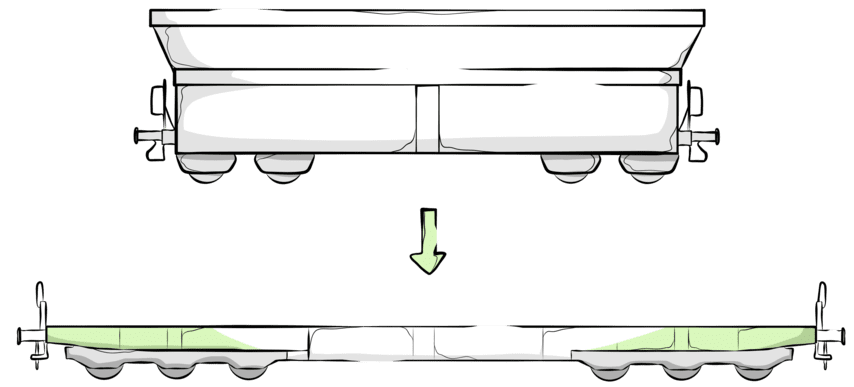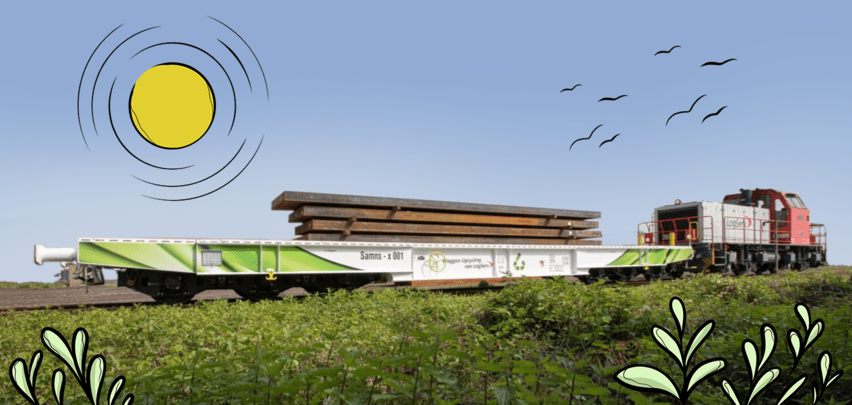RAILCARS IN TRANSITION: UPCYCLED AT voestalpine, NOT DECOMMISSIONED
LogServ offers individualized transport and logistics solutions to industrial key accounts. Decommissioned bulk railcars are being converted for the transport of cut sheets and slabs on the voestalpine works premises. The environment is happy, and so is voestalpine.
Since the company was founded in 2001, LogServ has positioned itself as a strategic partner to domestic industrial companies. At the voestalpine site in Linz, LogServ operates Austria’s largest industrial plant and railway feeder line. With its own fleet of vehicles and more than 900 employees, the subsidiary of voestalpine Stahl GmbH generated more than 400 million euros in sales last year. Click here to go to the web site.

BULK FREIGHT CARS BECOME FLAT CARS
In this specific instance, 15 bulk railcars would have been scrapped, but they have now found their way back into the transport industry in a new flat railcar design. What sounds simple actually takes a lot of complex designing and manufacturing work. This is because the railcars must be perfectly adapted to the works traffic at the Linz production site. At a length of just under 20 meters, they are even four meters longer than other railcars in their league and boast a payload of up to 100 tons.
UPCYCLING MAKES THEM AS GOOD AS NEW
The upcycling of old railcars would not be possible without the professional skills of expert craftsmen who dismount, sandblast and repaint the braking devices, axles, bogies and buffers. The frame of each railcar is completely replaced. Components exposed to large amounts of stress are made of high-strength steels from voestalpine, for example alform®.
Additional railcars will be upcycled in the future so that they can be used for transport in different areas. Being able to rebuild such an important means of transport is the very definition of a circular economy. It is clever recycling in every sense of the word.


I must say that we are right on track in terms of sustainability. A very slick move, in my opinion. All lines are clear for the environment!
Stella Sustainable, Sustainability Expert
